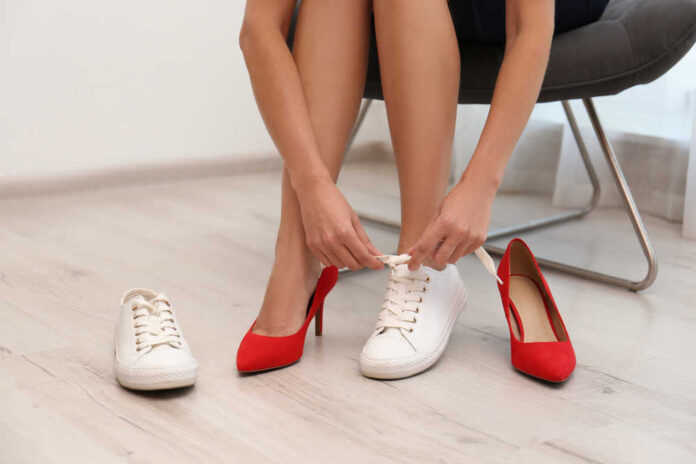
When you purchase a new pair of shoes, you should consider more than just how stylish they look.
For hours at a time, the full weight of your body will be pressed into these shoes, so it’s essential to ensure they’re safe and comfortable. If they can’t adequately support you, you could be at risk for severe foot and back injuries.
Look out for these signs of bad shoes:
Too Big, Too Small, Too Wide, Too Narrow
Wearing the wrong size shoe can lead to all sorts of problems.
Small shoes crowd your toes, potentially causing pain and blisters or even tingling and numbness if they cut off your circulation.
Similarly, narrow shoes can squeeze your foot and cause strain and discomfort.
If your shoes are too big or too wide, you may end up with blisters and calluses due to the extra friction produced as your feet slide around inside them. You could trip and fall if your shoes constantly slip off.
Good-fitting shoes should be snug, not too tight, and should allow you to wiggle your toes. Consider getting professionally measured to find your perfect size.
Stilettos and High Heels
High-heeled shoes change how your body weight is distributed, and they can put extra pressure and strain on your toes and balls of your feet, and the soles of your feet.
This can cause pain and injuries in your feet, legs, and spine, and the uncomfortable position can also cause a condition known as hammertoes—abnormal bends in the joints of your toe which can cause permanent deformity that may need surgery to correct.
High heels, especially stilettos, can also easily lead to ankle sprains and fractures if you lose your balance.
If you are interested in high heels, choose ones that are not quite so high and have a wide, stable base.
Flip-Flops, Flats, and Other Unsupportive Shoes
Flip-flops and shoes that don’t provide adequate support can cause plantar fasciitis.
Along the bottom of your feet, running from your toes to your heel is a thick band of tissue called the plantar fascia. This ligament supports the arch of your foot and absorbs shock as you walk.
The plantar fascia can become strained and inflamed when you wear shoes that don’t provide support. You’ll feel this as a stabbing pain in your heel that worsens when walking, standing, or going upstairs.
For some footwear, you can use orthotic inserts to improve their support. Otherwise, purchase shoes that have good arch support and a cushioned sole.
Old and Worn Out Shoes
Shoes don’t last forever; as they age, they can start to break down and fall apart.
They may develop holes, tears, or cracks in the shoe’s upper part, or the soles may become separated from the rest of the shoe. They can lose their cushioned support and shock absorption, And they can lose the traction on the bottom that prevents you from slipping.
All of these problems can contribute to injuries.
If your shoes show signs of wear and tear, it’s time to replace them. Don’t wait until they completely fall apart or they’re causing you pain—by then, it may be too late.






















